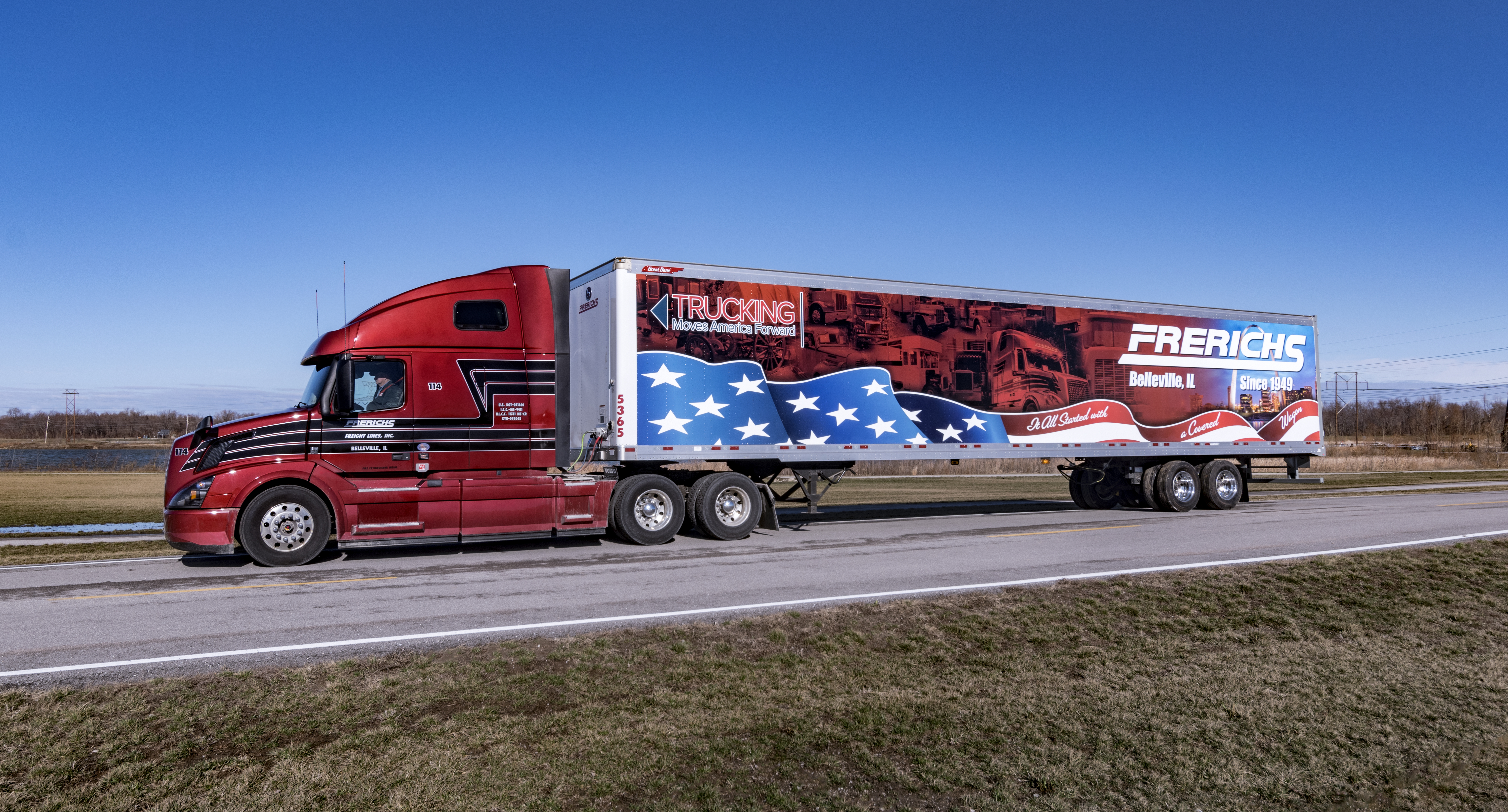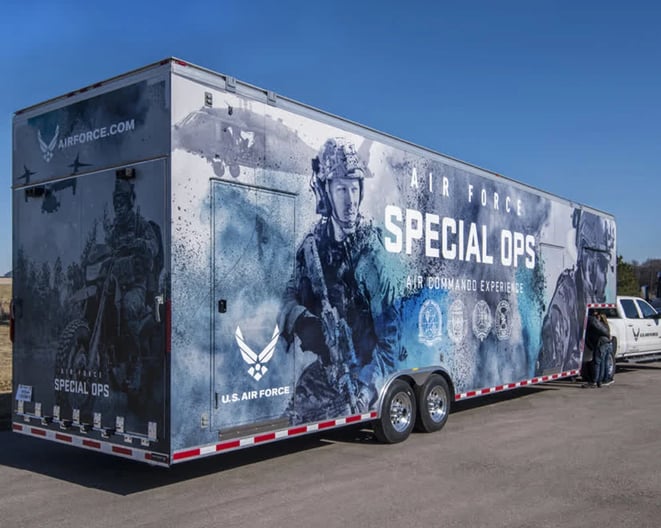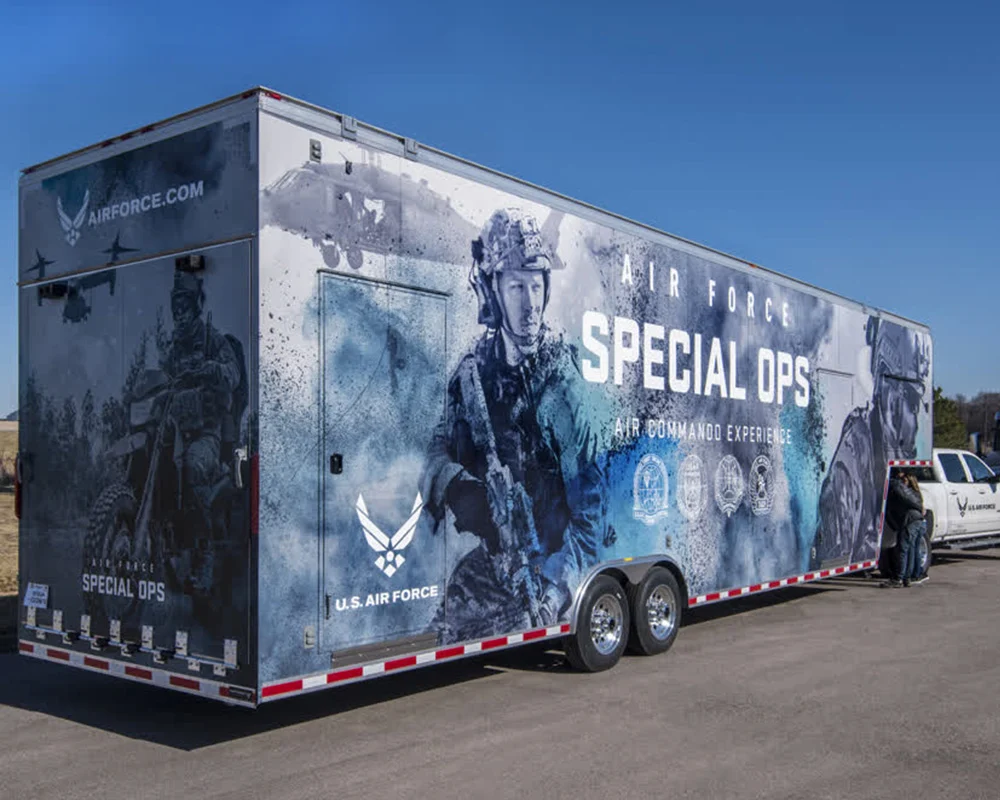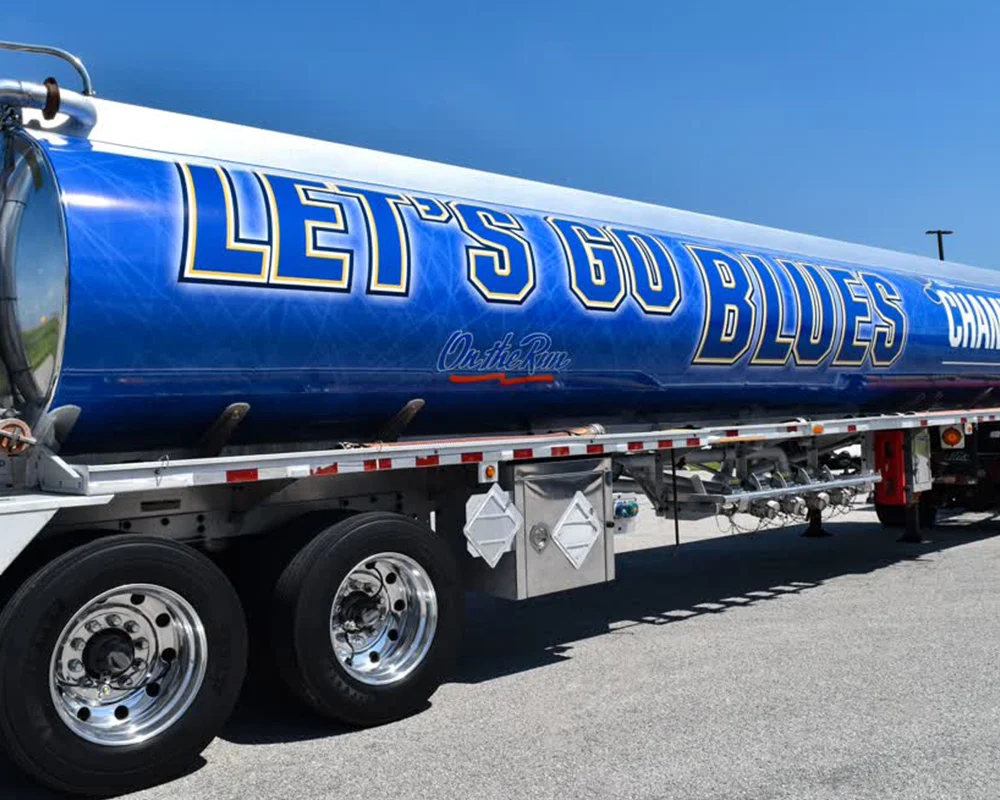Do Fleet Wraps Protect Vehicle Surfaces?
Maintaining a strong brand identity has never been as important in today’s fast-paced, dynamic business landscape. With fleet wraps, both small and...
5 min read
Craftsmen Industries Dec 23, 2023 9:26:00 AM

Using fleet wraps on vehicles is an excellent way to advertise your brand. While you are browsing through your options, you might wonder what materials are commonly used in the production of fleet wraps.
From the very beginnings of fleet advertising, the materials used for the vehicle wraps have slightly changed. As we have been in the industry for a few decades now, we can reveal what material is used for vehicle wraps so you can make the right choice for your business.
 Source: craftsmenind.com
Source: craftsmenind.com
When we are discussing vehicle branding with our clients, we often get asked what materials are commonly used in the production of fleet wraps. Understanding the materials your business vehicle will be wrapped in is crucial.
When vehicle wraps were invented, they were prone to fading and cracking. Luckily, the composition of the material has improved and evolved for the better throughout the years, increasing its durability for over five years
The warps we use are made from heavy-duty vinyl. On one of its sides, the vinyl has an adhesive, so it can be glued to the vehicle when exposed to high heat. The vinyl vehicle fleet wraps may have three finishes: gloss, matte, and metallic.
But, are vinyl wraps the most popular choice for fleet wraps, and have they been proven as one of the most durable materials for the creation of fleet wraps? The answer is yes. Specifically, the two top materials used in the production of fleet wraps are cast and calendered vinyl.
Let’s compare the two types of vinyl films side-by-side by looking at various characteristics.
As the best commercial fleet wrap manufacturer, we believe we can explain the process best. The primary ingredient used in both cast and calendered vinyl is the polyvinyl chloride polymer.
A plasticizer is added for flexibility and suitable pigments to achieve the desired color. Most importantly, additives are added so the material can resist UV radiation.
Even though both vinyls use the same primary ingredient, there are slight differences in the manufacturing process. Calendered vinyl is firm and extruded through a machine, while the cast is initially liquid, placed in sheets, and evaporated.
Cast vinyl is produced thinner than calendered film, typically around 2 mils. Although it is thinner, cast vinyl is typically more durable than its counterpart.
The average thickness of calendered film ranges between 2.5 to 4 mils. It is stiffer than cast vinyl and works best for flat and simple surfaces. Unfortunately, the colors of calendered film tend to get color fading faster because of the lack of UV filters. Yet, it is less abrasive than cast vinyl.
Generally looking; cast film is more expensive than calendered films. However, considering its properties, it is definitely worth it to pay a little bit more for your fleet advertising project and get a cast film wrap.
As we mentioned previously, calendered vinyl is best for flat sign surfaces and substrates. In applications for vehicles, we recommend the calendered vinyl for trailers and box trucks that have no curves and no or just a few rivets.
On the other hand, cast vinyl is more flexible and can easily adapt to the shape of the surface on which it is applied. Consequently, this type of vinyl is best for vehicles with complex curves, many rivets, and other types of obstructions.
Aside from calendered and cast vinyl, vehicles can be wrapped using carbon fibers or chrome wrap.
There are rare exceptions where vehicle wraps are done with carbon fibers. Some businesses choose carbon fiber wraps because of the matte finish, notable texture, and grey-black color.
Carbon fiber is a durable and strong but, at the same time, lightweight and flexible material. Carbon fiber wraps protect the paint and body of the car while giving it an aesthetically appealing look.
However, carbon fiber is rarely used for fleet marketing because of its design. It is almost impossible to print on the material, meaning you can only use it if you want to achieve a sleek look for your company vehicles.
Chrome wraps give the vehicle a luxurious look. Vehicles in chrome wraps most certainly have an eye-catching appearance.
On another note, chrome wraps are not as durable as vinyl fleet wraps. Consequently, we don’t recommend them for fleet marketing because they can be easily damaged. Additionally, they are more expensive than other options, difficult to maintain, and susceptible to heat.
Regarding vehicle graphics and fleet advertising, the materials are one of the crucial factors determining the quality of the wrap. As a business, your number one priority should always be choosing the best materials so you can enjoy the fleet wrap benefits longer.
Different materials have varying lifespans, adhesive features, resistance, and cost-effectiveness.
Firstly, the materials used for vehicle wraps will determine the durability and your overall costs. Many businesses think that low-quality materials are the better budget choice. However, that is not true.
If you go with budget-friendly materials, you may face higher expenses in the long run. Low-quality fleet wraps might be harder to remove, increasing the removal costs. In addition, they might damage your vehicle and require unnecessary repairs.
The material of the fleet wrap is a vital component in determining the resistance to harsh conditions and dirt. Higher-quality materials, like the ones we use, won’t fade, crack, or peel easily, even if you have them on for an extended period of time. Investing in a quality fleet wrap will minimize the need for replacement or repairs.
Furthermore, the better the quality of the materials, the more vibrant and professional the graphic and print will look. In other words, choosing the right materials will help you protect your brand and maintain a professional image.
Besides understanding what materials are commonly used in the production of fleet wraps, you should have in mind the different films we can use. In a nutshell, there are two main types of fleet wrap film, each with its own characteristics.
The wrap films are divided into PVC and PVC-free films. The main difference is the material they are made out of. As the name suggests, PVC films are made from polyvinyl chloride polymer and elastomers. The film is flexible and can make a good bond with the substrate.
Conversely, the non-PVC film is made from bio-based materials. In addition, the whole manufacturing process is greener because it uses almost 60% less solvent. Hence, if you want to help the environment but still have a high-quality fleet wrap, the non-PVC film should be your choice.
 Source: craftsmenind.com
Source: craftsmenind.com
The calendered vinyl can last up to five years. It is best used for short to mid-term fleet wraps. In addition, you should keep in mind that the color of the calendered vinyl can influence its durability. Metallic colors tend to fade more quickly.
There are several things your business must consider before wrapping vehicles. Firstly, you should choose a graphic film that is durable. Next, you must choose an experienced team to install your fleet wrap and ask for a warranty. Finally, you should consider how easy it will be to maintain and eventually remove the fleet wrap.
As experts in fleet wrapping, we don’t recommend you do it yourself. But if you are curious about the process, the process includes the following steps: designing and making the vinyl wrap material according to the vehicle measures, preparing the vehicle, positioning, placing and trimming the wrap and adding some final touches.
In recent years, fleet marketing has gained back its popularity as a strategy to showcase your brand. But, besides making a good marketing plan, you should also know what materials are commonly used in the production of fleet wraps.
That’s why we shared our experience with you, so you can start your fleet vehicle graphic project well-informed. By choosing the right material will increase durability, make the maintenance process easier, and help you reach your marketing goals.
Don’t forget that you should also choose the manufacturing and installation company wisely. If you pick us, we will make the fleet wrap from the best heavy-duty vinyl, so you don’t have to worry about its durability and quality.

Maintaining a strong brand identity has never been as important in today’s fast-paced, dynamic business landscape. With fleet wraps, both small and...

When it comes to your business advertising, you should explore all options and try different methods. One of the best ways to reach a broader target...

Fleet wraps offer many benefits for businesses, from protecting the vehicle to creating a moving marketing campaign. But for the marketing efforts to...